21 Exciting Korean Appetizers to Kickstart Your Meal
Korean appetizers tantalize taste buds with vibrant flavors and intricate culinary artistry.
Small plates represent more than just food - they embody cultural traditions and social connections.
Delicate and bold, these starters transform ordinary meals into memorable experiences.
Served alongside main courses, these delectable bites offer surprising textures and unexpected combinations.
Seasoned ingredients showcase regional techniques passed through generations of passionate home cooks.
Regional variations highlight local ingredients and family recipes, creating unique sensory journeys.
Each appetizer tells a story of heritage, innovation, and communal dining.
Below you'll find 21 great Korean appetizers that promise to elevate your culinary adventure:
Great Korean Appetizers for Every Gathering
Small plates, called banchan, are at the heart of every Korean feast. These appetizers deliver color, crunch, and lively flavor, making any meal feel festive and complete from the very first bite.
Yukhoe
Yukhoe dazzles Korean cuisine as a raw beef delicacy featuring paper-thin slices of premium meat seasoned with soy sauce, sesame oil, garlic, and sugar.
Korean pear slices typically accompany this elegant preparation, adding crisp texture and subtle sweetness.
Restaurant chefs carefully select tender beef cuts to ensure optimal tenderness and taste.
Historical debates suggest Chinese influences or royal Korean court origins contribute to its mysterious background.
Derived from two Korean words - yuk (meat) and hoe (sashimi) - yukhoe represents a sophisticated raw meat preparation.
Adventurous diners appreciate its intense umami notes and elegant presentation.
Jeon
Jeon are crispy Korean pancakes bursting with savory ingredients like meat, seafood, and vegetables, pan-fried to golden perfection in a light flour and egg batter.
These versatile dishes originate from traditional Korean cuisine and serve multiple dining purposes as appetizers, side dishes, or quick snacks.
Korean families commonly prepare jeon during festive occasions like Lunar New Year and Korean Harvest Festival.
Seafood and vegetable variants remain especially popular across different regions of Korea.
Regional ingredients often determine each jeon's unique flavor profile and texture.
Chefs expertly mix protein and vegetable components before coating them in seasoned batter.
Small dipping sauces typically accompany these crisp pancakes for enhanced taste.
Homemade jeon reflect generations of Korean culinary craftsmanship and regional cooking traditions.
Gamjajeon
Gamjajeon are crispy Korean potato pancakes beloved for their golden-brown exterior and tender potato core.
Korean home cooks craft these small, round pancakes by grating or pureeing potatoes and occasionally adding scallions, chives, carrots, or onions for extra flavor.
Pan-frying transforms the raw potato mixture into a crunchy, irresistible dish that serves multiple dining purposes.
Restaurants and families serve gamjajeon as a quick snack, appetizer, or light main course.
Traditional accompaniments include choganjang, a zesty dipping sauce made from soy sauce, vinegar, sugar, and water.
Some regions enhance the pancakes with gochujang chili paste, chili flakes, and sesame seeds for added heat and complexity.
Korean cuisine celebrates these versatile potato pancakes as a simple yet satisfying comfort food.
Street vendors and home kitchens alike feature gamjajeon as a popular, crowd-pleasing dish.
Kimchijeon
Kimchijeon are crispy, savory Korean pancakes packed with fermented kimchi and a golden, crunchy exterior that highlights the tangy, spicy flavors of aged kimchi.
Korean home cooks traditionally prepare these pancakes using ripe kimchi, flour batter, and optional additions like ground meat or chili paste.
Sesame seeds often garnish the surface, adding a nutty accent to the dish.
Flour and kimchi create a simple base that transforms into a satisfying meal or snack.
Gochugaru (red pepper flakes) can enhance the pancake's heat and complexity.
Dipping sauces frequently accompany kimchijeon, providing an extra layer of flavor.
Restaurants and street vendors throughout South Korea serve these versatile pancakes as appetizers or light meals.
Pajeon
Pajeon are Korean savory pancakes bursting with green onions, creating a crispy, golden-brown texture that defines this beloved street food.
Green onions (pa) provide the signature flavor and name of this versatile dish, which can include seafood, vegetables, or kimchi.
Rice flour and eggs form the base of the light, airy batter that creates a perfect crisp exterior.
Korean cooks prepare pajeon in various sizes, from small individual pancakes to large shared versions cut into wedges.
Soy sauce and vinegar serve as the traditional dipping sauce, enhancing the pancake's rich flavors.
Restaurants and street vendors across South Korea serve pajeon as a popular snack or appetizer.
Home cooks and professional kitchens alike enjoy creating these adaptable pancakes with their own unique ingredient combinations.
Pajeon pairs wonderfully with rice and offers a satisfying meal that showcases Korean culinary creativity.
Haemuljeon
Haemuljeon is a savory Korean seafood pancake bursting with ocean flavors and crispy textures.
South Korean cuisine celebrates this pan-fried delicacy featuring an array of fresh seafood like mussels, oysters, squid, shrimp, and clams.
Bite-sized seafood pieces blend seamlessly with scallions, eggs, and flour to create a golden-brown pancake with irresistible edges.
Chefs carefully fry the battered mixture until both sides reach a perfect crisp, transforming simple ingredients into a mouthwatering treat.
Salt and umami dance through each bite, enhanced by a zesty dipping sauce of soy sauce, vinegar, red pepper flakes, sugar, and black pepper.
Haemuljeon serves as a popular appetizer or light meal in Korean households and restaurants.
Generations have enjoyed this versatile dish that captures maritime freshness in every crispy, flavorful slice.
Hobakjeon
Hobakjeon are savory Korean zucchini fritters that showcase summer's freshest produce through a simple yet delicious pan-fried technique.
Korean home kitchens transform zucchini slices into crispy golden discs by coating them in flour and egg before gently frying to perfection.
Salt helps draw moisture from zucchini, ensuring a light and crisp texture that makes these fritters irresistible.
Summer gardens provide the ideal zucchini for this traditional dish, which appears frequently during Seollal and Chuseok celebrations.
Family gatherings often feature hobakjeon as a beloved side dish alongside steamed rice.
Soy sauce-based dipping sauces complement the fritters' mild vegetable flavor.
Home cooks across South Korea prepare this dish with minimal ingredients and maximum flavor.
Wanjajeon
Wanjajeon are traditional Korean meatballs bursting with savory flavor and cultural significance.
Korean families craft these delicate patties using a blend of ground meat, typically beef or pork, mixed with tofu for added texture.
Finely chopped onions, garlic, carrots, and scallions enhance the meat's rich taste and provide subtle vegetable notes.
Cooks carefully shape and flatten the mixture before coating the patties in flour and egg wash.
These versatile meatballs transform easily between main courses, side dishes, snacks, and appetizers.
Koreans especially enjoy wanjajeon during festive occasions like New Year and Chuseok harvest celebrations.
Small dipping sauces often accompany the meatballs, adding an extra layer of flavor.
Traditional preparation methods ensure each bite connects diners to Korean culinary heritage.
Guljeon
Guljeon, a South Korean delicacy, transforms briny oysters into crispy golden morsels through an expert pan-frying technique.
Seafood lovers celebrate this traditional dish for its simple yet sophisticated preparation method.
Oysters are carefully shelled, rinsed, and coated with flour before being dipped in a seasoned egg mixture enriched with rice wine, salt, and chopped scallions.
Each oyster gets a light, crispy exterior that seals in its natural maritime flavor and tender texture.
Professional Korean cooks quickly pan-fry the battered oysters in hot oil, creating a perfectly golden-brown crust.
Rice wine adds a subtle depth to the batter, enhancing the oysters' natural sweetness.
Small green scallions provide a fresh, sharp contrast to the rich seafood.
Served hot with a complementary dipping sauce, guljeon offers a perfect balance of texture and taste that showcases Korea's coastal culinary traditions.
Radish Pancake (Mujeon)
Mujeon are savory Korean pan-fried radish patties bursting with delicate flavor and cultural significance.
South Korean kitchens transform fresh radishes into crispy golden delights through a meticulous cooking process.
Thin radish slices get seasoned with salt and coated in a light batter made from flour, salt, and vegetable stock.
Skilled cooks carefully fry each slice in hot oil until both sides turn a perfect golden brown.
Crispy edges and tender centers make these patties a beloved side dish in Korean cuisine.
Traditional serving methods include pairing mujeon with steamed rice or a tangy soy-vinegar dipping sauce.
Home cooks often prepare these appetizers during seasonal gatherings and special meals.
Generations have enjoyed this simple yet elegant dish as a testament to Korean culinary traditions.
Glazed Meatballs (Wanja Jorim)
Wanja jorim are classic Korean glazed meatballs featuring a perfect sweet-savory flavor profile that combines ground beef, garlic, soy sauce, and sugar into irresistible bite-sized spheres.
Korean home cooks prepare these meatballs by mixing ground beef with aromatic seasonings and carefully shaping them into uniform balls.
Flour-dusted meatballs sizzle in hot oil until golden brown and fully cooked.
Chefs create a glossy glaze by reducing sugar and soy sauce in the same pan where meatballs were fried.
These glazed meat spheres develop a rich caramelized exterior that seals in juicy, tender meat.
Skewered or served alongside steamed rice, wanja jorim make an excellent appetizer or main dish.
South Korean families often enjoy these meatballs during casual gatherings and special occasions.
Small yet packed with intense flavor, these meatballs represent traditional Korean comfort food at its finest.
Saewoojeon
Saewoojeon are crispy Korean shrimp pancakes featuring fresh seafood delicately coated in light batter and pan-fried to golden perfection.
Korean home kitchens frequently prepare these savory pancakes as popular appetizers or side dishes during gatherings and meals.
Seasoned shrimp get carefully salted and peppered before being dusted with flour and dipped in whisked eggs.
Skilled cooks gently fry the battered shrimp until edges turn golden brown and crispy.
Small to medium-sized shrimp work best for creating uniform pancake shapes.
Traditional recipes often include minimal seasonings to highlight natural seafood flavors.
Vegetable oil provides the perfect medium for achieving a crisp exterior and tender interior.
Korean families enjoy saewoojeon as a quick, protein-rich dish that connects generations through shared culinary traditions.
Garibi Gui
Garibi gui represents a succulent Korean seafood delicacy featuring tender grilled scallops marinated in a complex blend of sesame oil, garlic, ginger, rice wine, sugar, white pepper, and orange juice.
South Korean coastal regions pioneered this flavorful preparation method that transforms fresh shellfish into a mouthwatering grilled dish.
Marinades infuse the scallops with deep, multilayered flavors before quick grilling ensures a perfectly caramelized exterior.
Expert chefs carefully select premium scallops to guarantee maximum taste and texture.
Seafood restaurants and home kitchens across Korea celebrate this simple yet sophisticated recipe.
Small side dishes typically accompany the grilled scallops during serving.
Korean dining culture emphasizes balanced, fresh ingredients in every bite.
Kkaennip-Jeon
Kkaennip mari are savory Korean meat parcels featuring ground beef meticulously wrapped in fragrant perilla leaves and carefully pan-fried with a crispy flour and egg coating.
Korean home kitchens traditionally prepare these compact bundles with seasoned beef enhanced by scallions, garlic, and onions.
Sesame oil and soy sauce provide deep umami flavors that elevate the meat's natural richness.
Cooks sometimes incorporate additional ingredients like tofu or finely chopped vegetables to create textural complexity.
Each parcel represents a perfect blend of herbs, meat, and aromatic seasonings.
Small yet substantial, these bite-sized packages deliver intense Korean flavor profiles.
Families often serve kkaennip mari as appetizers or side dishes during casual meals.
Gochujeon
Gochujeon sparkles as a spicy Korean pan-fried delicacy crafted from fresh green chili peppers blended with simple ingredients.
South Korean kitchens transform chopped peppers and onions into a crispy batter using flour, water, and fish sauce.
Cooks carefully mix the ingredients to create a uniform blend before frying in hot oil.
Green chilies provide a sharp, fiery kick that dominates each bite's flavor profile.
Fish sauce adds depth and complexity to the traditional recipe.
Flour ensures a light, crispy exterior that contrasts with the pepper's intense heat.
Home cooks often serve gochujeon as a banchan (side dish) during meals.
Small and compact, these pepper pancakes complement rice and other Korean dishes perfectly.
Yukjeon
Yukjeon are savory Korean beef pancakes featuring thin, tender meat marinated in rich soy sauce and delicately coated with rice flour or egg batter.
Korean households traditionally prepare these pan-fried delicacies as a popular side dish or appetizer during special gatherings.
Skilled home cooks carefully slice beef into thin strips to ensure quick and even cooking.
Marinating the meat adds deep flavor and helps tenderize the protein before frying.
Rice flour or beaten eggs create a light, crispy exterior that seals in the meat's moisture.
Families often serve yukjeon alongside kimchi or as part of a larger Korean meal spread.
Salt and soy sauce provide essential seasoning that enhances the beef's natural taste.
Dubujeon
Dubujeon represents a savory Korean pancake packed with protein and flavor from crumbled tofu blended with fresh vegetables.
South Korean home kitchens often prepare this simple pan-fried dish using basic ingredients like eggs, flour, and chopped scallions.
Silken or firm tofu serves as the primary component, creating a soft yet satisfying texture when mixed with beaten eggs.
Onions and carrots typically add color and extra nutrition to the mixture.
Seasonings like salt and pepper enhance the overall taste profile of this classic Korean side dish.
Cooking involves mixing ingredients and frying the batter in a hot pan until golden brown and crispy.
Families enjoy dubujeon as a quick, nutritious meal that transforms humble ingredients into a delicious treat.
Tuna Jeon (Chamchijeon)
Chamchijeon represents a classic Korean pan-fried tuna pancake bursting with savory flavors and simple ingredients.
Korean home cooks quickly mix canned tuna with finely chopped onions and garlic into a smooth batter of flour, eggs, and seasonings.
Sesame oil adds a distinctive nutty undertone that elevates the overall taste.
Vegetable oil helps create a crispy golden-brown exterior when pan-frying the thin pancakes.
Each small pancake cooks quickly and develops a light, crisp texture that makes it perfect for appetizers or side dishes.
Families often enjoy chamchijeon as a quick meal or snack that satisfies hunger with minimal preparation time.
Street vendors and home kitchens across South Korea frequently prepare this popular dish as a versatile and budget-friendly option.
Jeonggwa
Jeonggwa represents traditional Korean candied treats crafted from seeds, fruits, vegetable stems, or roots through a delicate sugar or honey syrup preservation process.
Korean artisans carefully slice ingredients and immerse them in sweet liquid, allowing slow dehydration that creates a unique crispy-chewy texture.
Roots like ginger and lotus frequently become central ingredients in these elegant confections.
Sugar coating transforms raw produce into glossy, translucent delicacies with enhanced sweetness and extended shelf life.
Historical records suggest jeonggwa originated during royal court banquets as sophisticated dessert offerings.
Royal kitchens perfected techniques for creating these intricate sweets that balanced flavor intensity with aesthetic presentation.
Buddhist monasteries also embraced jeonggwa preparation as a method of fruit and vegetable conservation.
Modern Korean confectioners continue celebrating this centuries-old culinary tradition by maintaining traditional preparation methods while introducing contemporary flavor variations.
Oiseon
Oiseon showcases South Korean culinary creativity through delicate cucumber rolls stuffed with savory ingredients.
Korean chefs carefully slice cucumbers and create intricate pockets filled with tender beef, shiitake mushrooms, and eggs.
Skillful preparation involves mixing fried beef, mushroom pieces, and egg components into a compact filling.
Each roll receives a precise drizzle of sweet-tangy sauce made from soy sauce, sugar, scallions, and sesame elements.
Cucumber walls hold the stuffing securely while providing a crisp, refreshing contrast to the rich inner mixture.
Sesame seeds add subtle nutty texture and visual appeal to the dish.
Traditionally served as an appetizer, oiseon stimulates diners' appetites with its complex flavor profile.
Intricate assembly and balanced ingredients make this Korean specialty a refined culinary experience.
Gajijeon
Gajijeon are savory Korean pan-fried eggplant fritters bursting with rich umami flavors and crispy textures.
South Korean home kitchens have perfected this simple yet delicious side dish using fresh eggplants sliced thin and carefully prepared.
Cooks first sprinkle eggplant slices with salt to remove excess moisture and enhance taste.
Each slice gets coated in flour, creating a light protective layer before being dipped in beaten eggs.
Minimal ingredients transform humble eggplants into golden-brown appetizers that complement rice and meat dishes.
Oil provides the perfect medium for frying these tender vegetable fritters to a beautiful golden color.
Traditional Korean families often serve gajijeon during casual meals or as a banchan (side dish) alongside main courses.
Can You Create a Full Meal Using Just Korean Appetizers?
Absolutely! Korean appetizers, or banchan, offer a diverse array of flavors and textures that can come together to form a satisfying and balanced full meal. Here’s how:

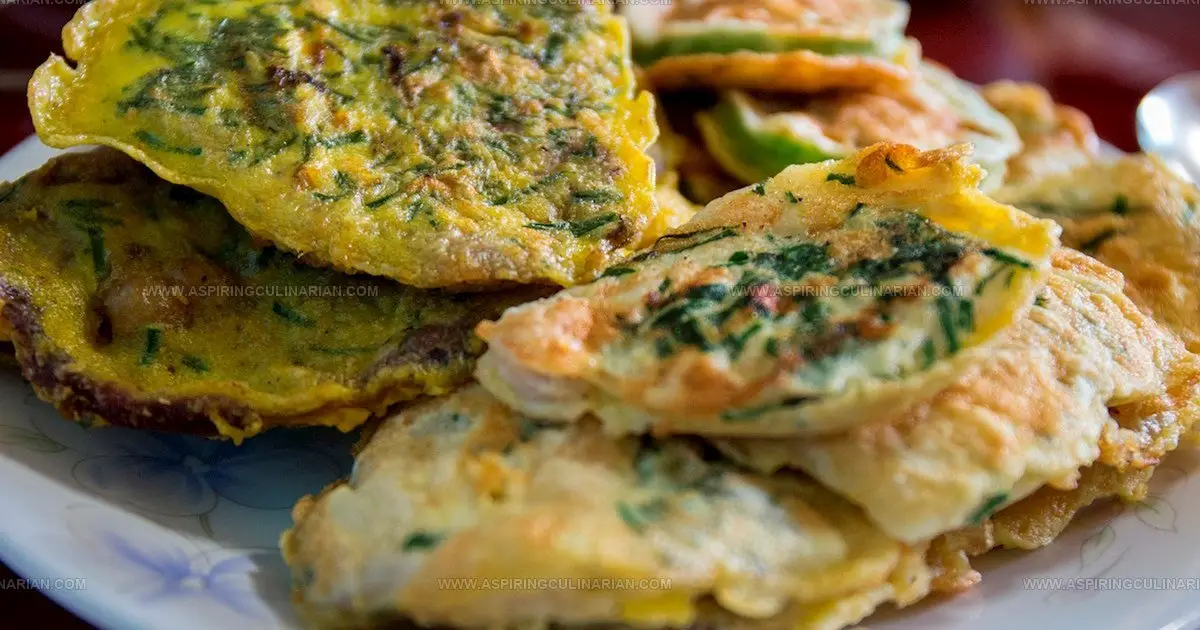
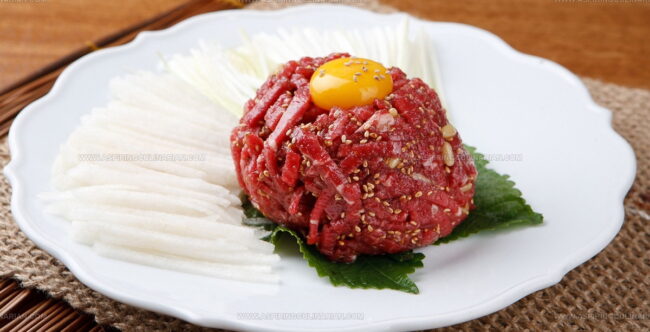
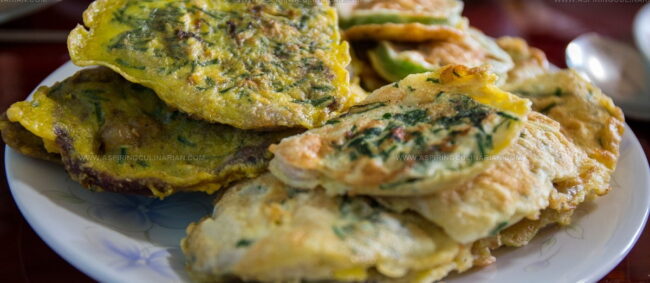
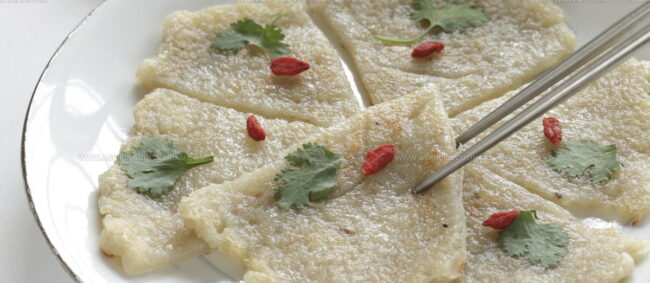
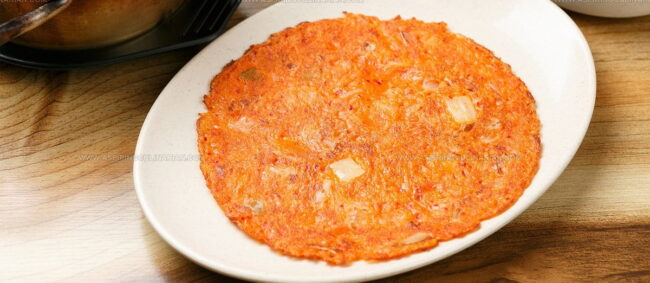
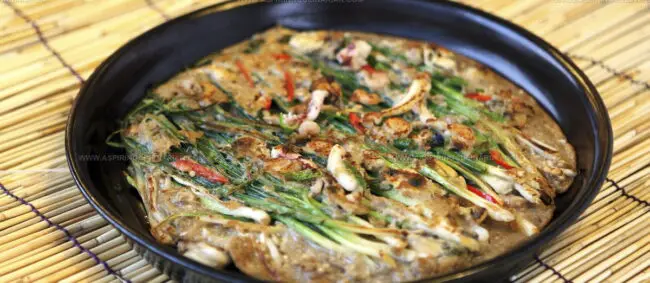
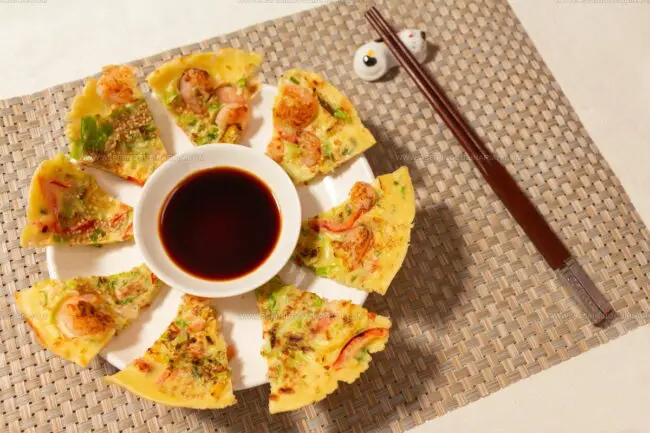
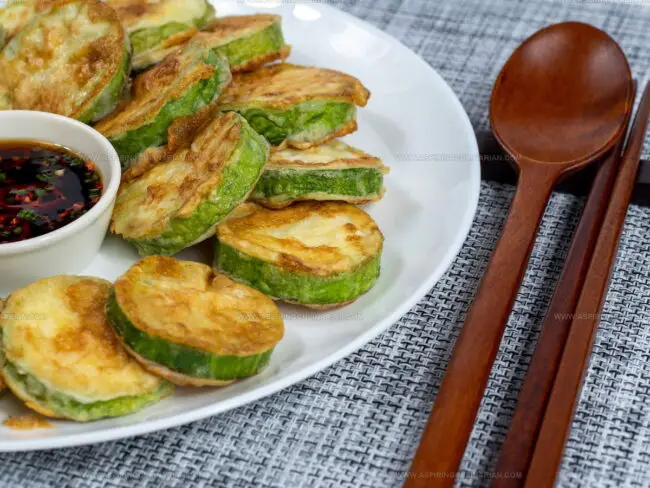
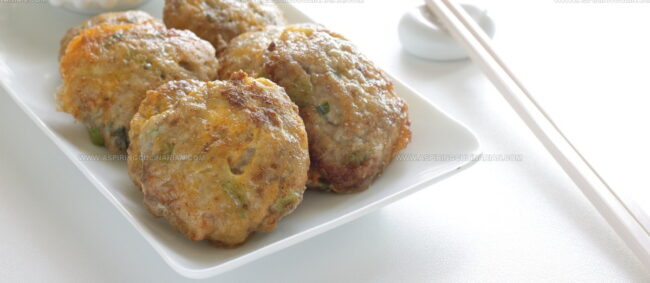
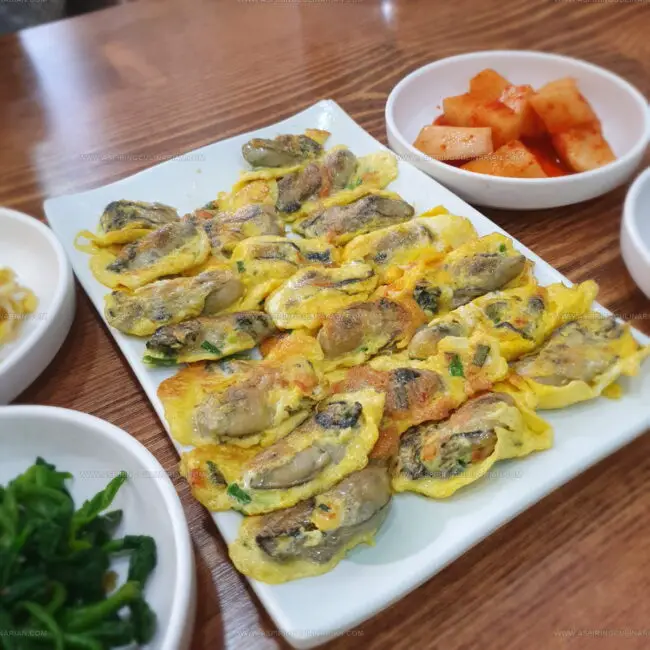
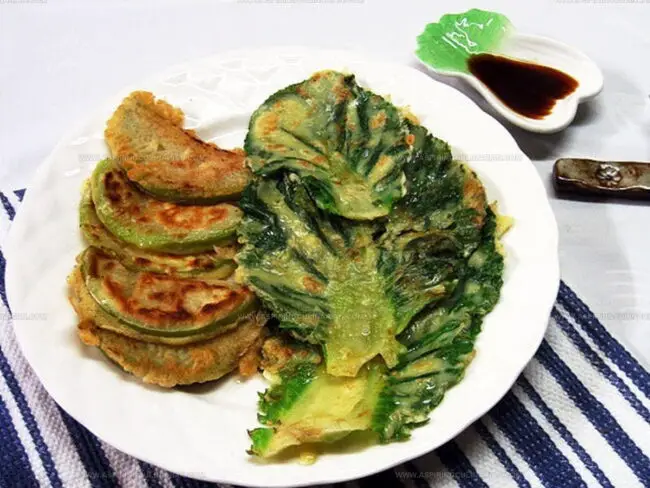
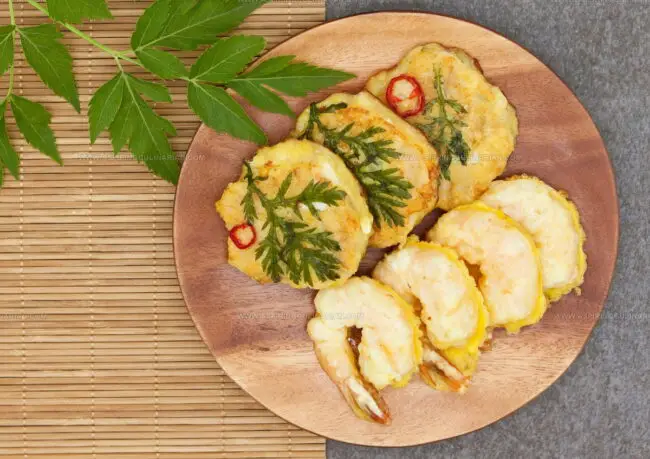
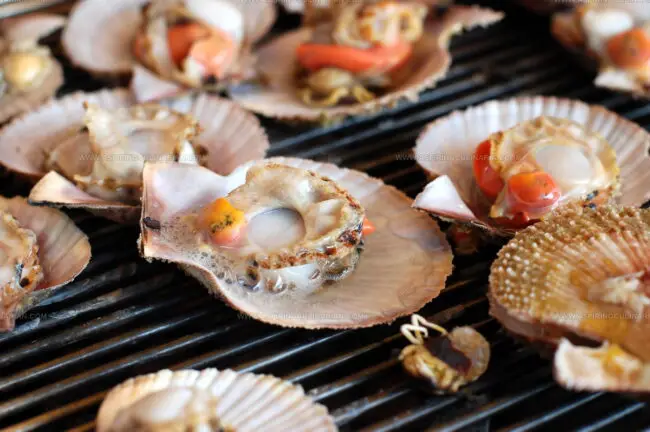
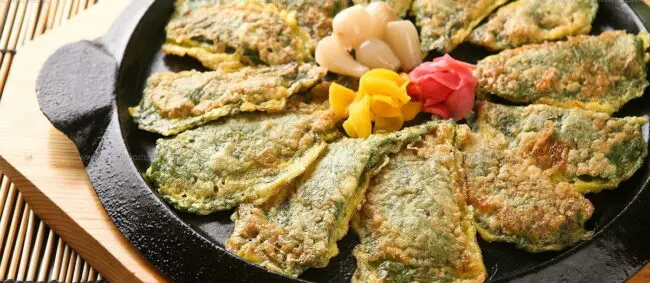
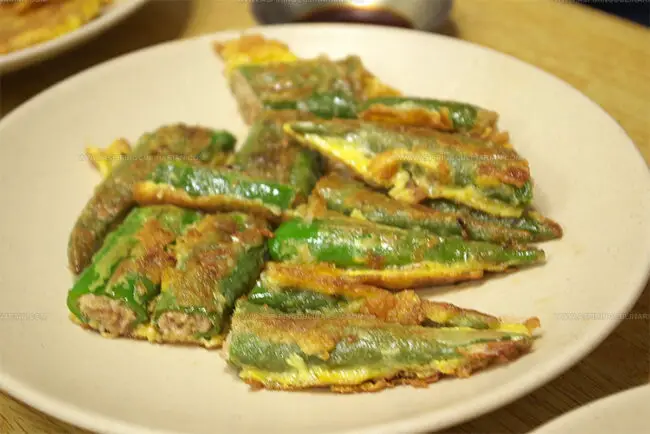
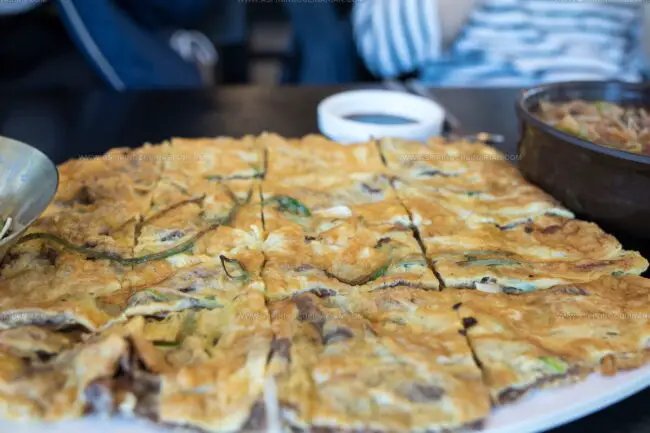
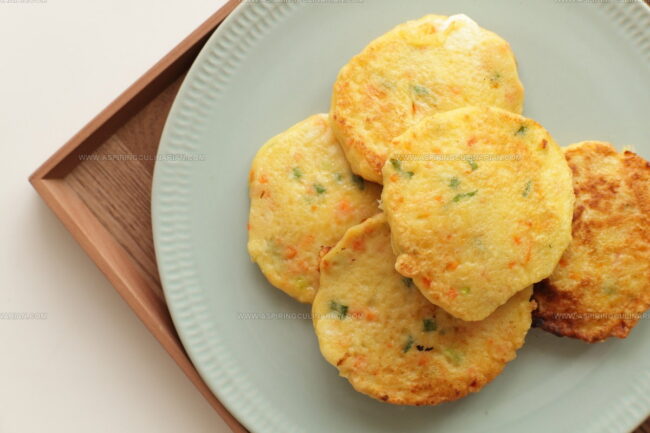
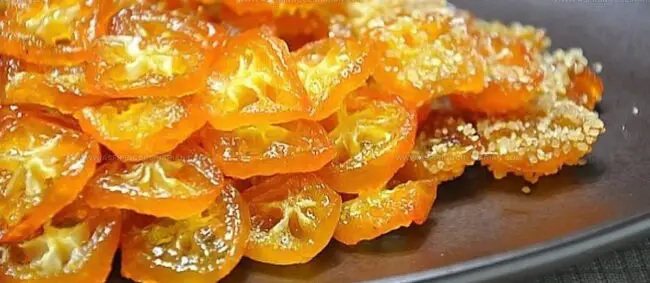
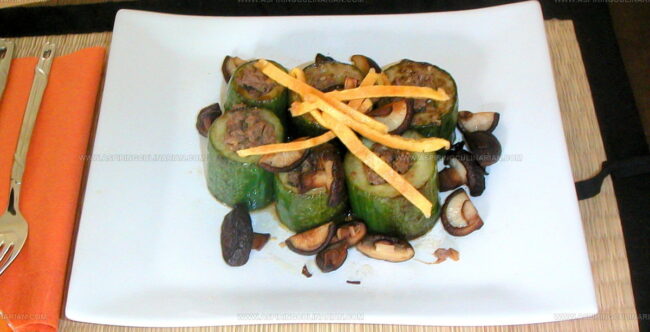
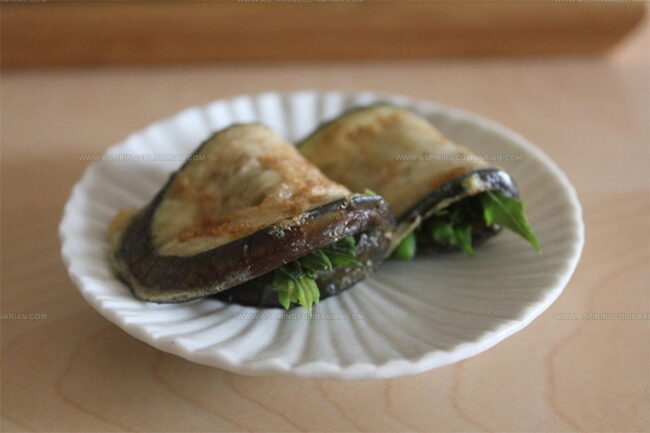
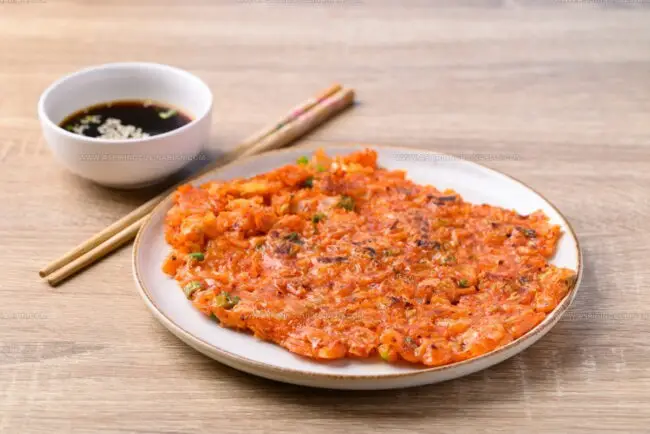
Lena Martinez
Contributing Writer & Culinary Educator
Expertise
Southwestern and Latin American cuisines, Vegetarian and plant-based recipe development, Culinary education and community outreach
Education
Santa Fe Community College, Santa Fe, NM
Certificate in Culinary Arts
Emphasized Southwestern cuisine and sustainable cooking practices
Lena grew up surrounded by the colors, spices, and traditions of the Southwest – flavors that sparked her love for bold, honest cooking. After earning her Culinary Arts certificate at Santa Fe Community College, she made it her mission to teach home cooks how to create flavorful, plant-powered meals without the fuss.
Her recipes are packed with vibrant ingredients, simple steps, and the kind of heart that turns a regular meal into something you’ll want to share. Outside the kitchen, Lena spends her time wandering farmers’ markets, trading family recipes, and helping young chefs find their voice through food.